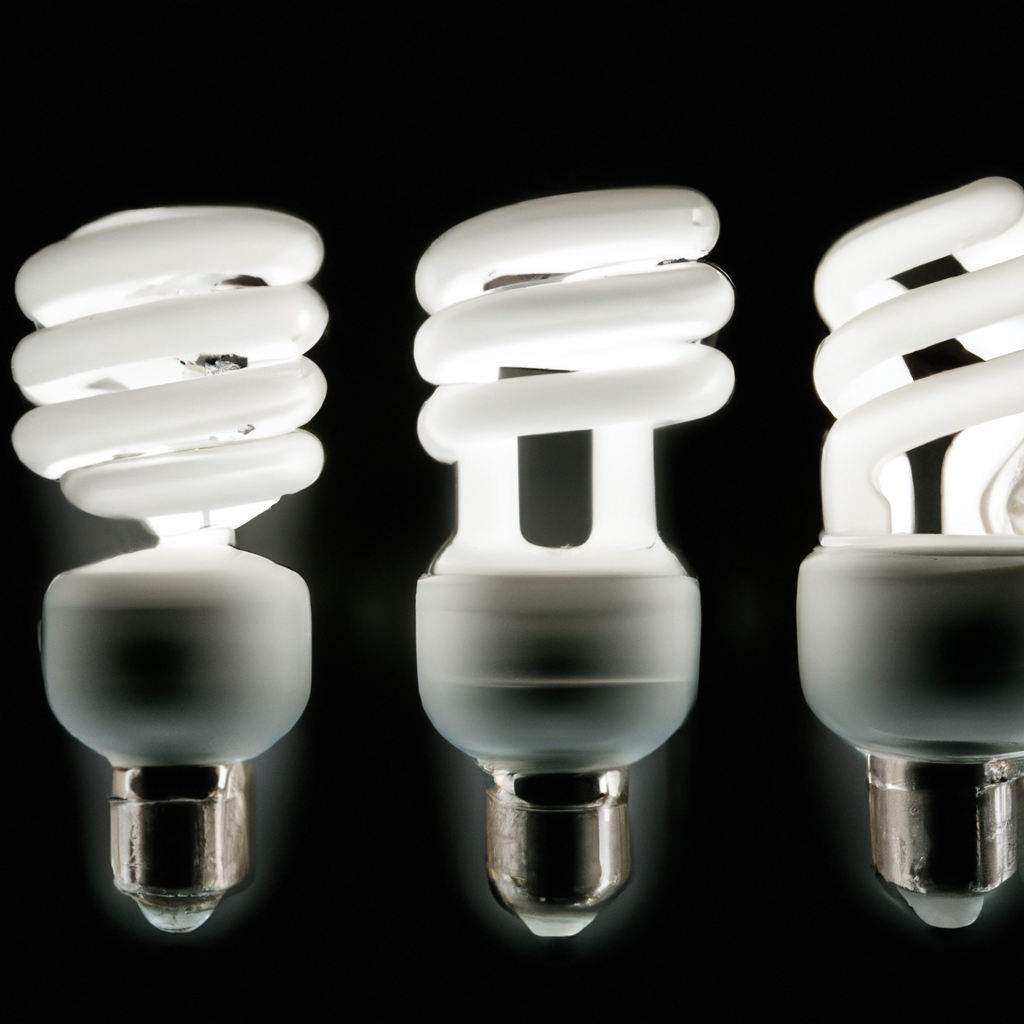
Looking to save energy and reduce your electricity bill? Look no further! In this article, we will explore a variety of energy-efficient lighting options that you can incorporate into your home. Whether you’re designing a new house or simply looking to update your current lighting, we’ve got you covered. From LED bulbs to smart lighting systems, we’ll discuss the benefits and features of each option, helping you make an informed decision. So, let’s shed some light on this topic and discover how you can brighten up your space while being mindful of your energy consumption.
LED Lighting
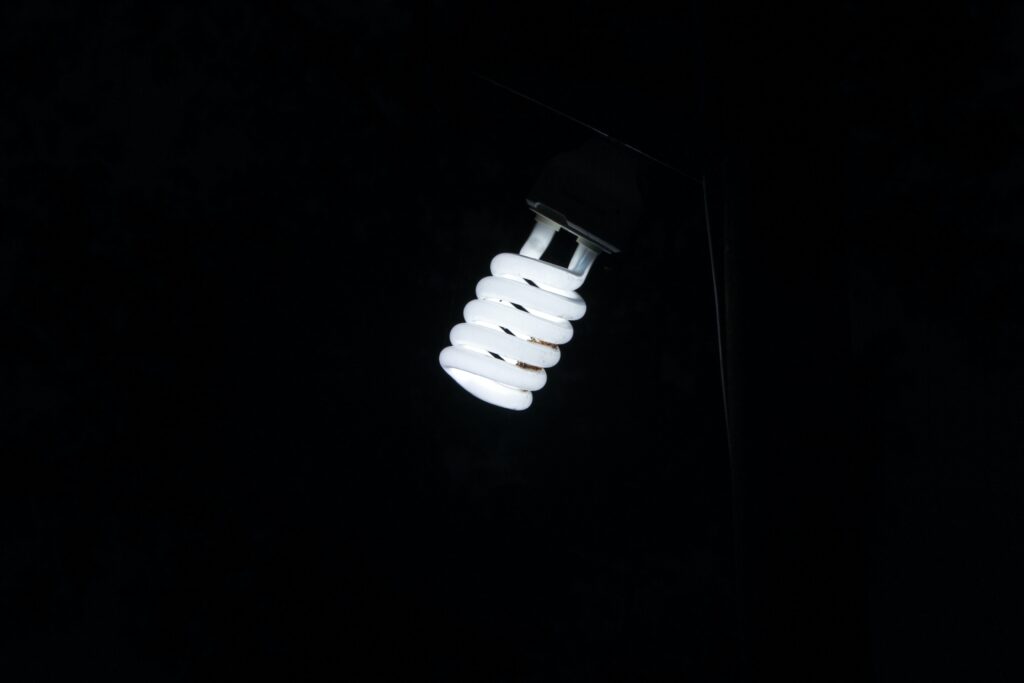
Advantages of LED Lighting
LED (Light Emitting Diode) lighting has gained popularity in recent years due to its numerous advantages. One of the key benefits of LED lighting is its energy efficiency. LED bulbs consume significantly less energy compared to traditional incandescent bulbs, making them a cost-effective choice for lighting up your home. Additionally, LED lights have a longer lifespan, lasting up to 25 times longer than incandescent bulbs. This means fewer replacements and less waste generated.
LED lighting also produces very little heat, which reduces the risk of fire hazards and makes them safer to use. They are also more durable and resistant to shock, making them ideal for outdoor lighting or areas where the bulbs may be exposed to rough conditions. LEDs are available in a variety of colors, allowing for creative and customizable lighting options. They also provide instant illumination without any warm-up time, which is particularly useful in areas where immediate brightness is required.
Types of LED Lighting
LED lighting is available in various types to suit different lighting needs. The most common types include LED bulbs, LED strip lights, LED downlights, and LED floodlights. LED bulbs are designed to replace traditional incandescent or CFL bulbs and are suitable for various fixtures, including table lamps, ceiling lights, and pendant lights. LED strip lights are flexible and can be used for decorative lighting, under-cabinet lighting, or accent lighting.
LED downlights are recessed lighting fixtures that are commonly used for general illumination in residential and commercial spaces. They offer a sleek and modern look while providing efficient lighting. LED floodlights, on the other hand, are designed to produce a wide beam of light and are often used for outdoor lighting, such as illuminating pathways, gardens, or security purposes.
Choosing LED Lighting
When choosing LED lighting for your home, there are a few factors to consider. First and foremost, make sure to check the color temperature of the LED bulbs. Color temperature is measured in kelvin (K) and determines the warmth or coolness of the light. For general lighting, a color temperature around 2700-3000K is recommended for a warm and cozy ambiance.
Brightness is another important consideration. LED bulbs are labeled with a lumen (lm) rating, which indicates the amount of light output. Higher lumens translate to brighter light. Additionally, pay attention to the wattage equivalence of LED bulbs to traditional incandescent bulbs, as this will give you an idea of the level of brightness you can expect.
It is also worthwhile to look for LED bulbs that are dimmable if you prefer to have control over the lighting intensity. Compatibility with dimmer switches is essential in achieving the desired ambiance. Lastly, consider the quality and brand reputation when selecting LED lighting. Opt for reputable brands with reliable warranties to ensure long-lasting and high-quality products.
CFL Lighting
Advantages of CFL Lighting
Compact fluorescent lamp (CFL) lighting offers several advantages over traditional incandescent lighting. One of the main benefits is its energy efficiency. CFL bulbs require less energy to produce the same amount of light, making them a cost-effective choice for homeowners. By replacing incandescent bulbs with CFLs, you can significantly reduce your energy consumption and save money on your electricity bills.
CFL lighting also has a longer lifespan compared to incandescent bulbs, making them a durable lighting option. This means you’ll have to replace bulbs less frequently, reducing waste and maintenance costs. Additionally, CFL bulbs emit less heat, making them a safer option.
Another advantage of CFL lighting is its versatility. CFL bulbs come in a range of colors and color temperatures, allowing you to create different moods and lighting effects in your home. They are available in various shapes and sizes, making them suitable for a wide range of fixtures, including table lamps, ceiling lights, and wall sconces.
Types of CFL Lighting
CFL lighting is available in different forms to suit different lighting needs. The most common type is the spiral-shaped CFL bulb, which can easily replace traditional incandescent bulbs in most fixtures. These bulbs provide excellent energy efficiency and come in various wattages and color temperatures.
Another type of CFL lighting is the covered CFL bulb. These bulbs have a protective cover that diffuses the light, providing a softer and more uniform illumination. Covered CFL bulbs are often used in fixtures where the bulb is exposed, such as pendant lights or decorative ceiling fixtures. They are designed to mimic the appearance of traditional incandescent bulbs while offering the energy-saving benefits of CFL technology.
CFL tubes are another option, often used in commercial or industrial settings for general illumination. These linear CFL bulbs are suitable for fixtures that require a linear shape, such as strip lights or recessed lighting.
Choosing CFL Lighting
When selecting CFL lighting for your home, consider the color temperature and brightness level that best suits your needs. CFL bulbs are available in various color temperatures, ranging from warm white (2700-3000K) to cool white (4000-4500K) and daylight (5000-6500K). Choose a color temperature that complements the ambiance and purpose of the room you’re lighting.
Brightness is measured in lumens, and each CFL bulb should indicate its lumen rating. Higher lumens yield brighter light. It’s essential to consider the wattage equivalence of CFL bulbs to traditional incandescent bulbs to understand the level of brightness you’ll achieve with each CFL bulb.
Additionally, make sure to check the size and shape of the CFL bulb to ensure compatibility with your fixtures. Pay attention to the base type, such as screw-in or pin-based, to ensure a proper fit. Finally, consider the color rendering index (CRI) of the CFL bulb, which measures how accurately the light source reveals the true colors of objects. Look for CFL bulbs with a high CRI for optimal color representation.
Halogen Lighting
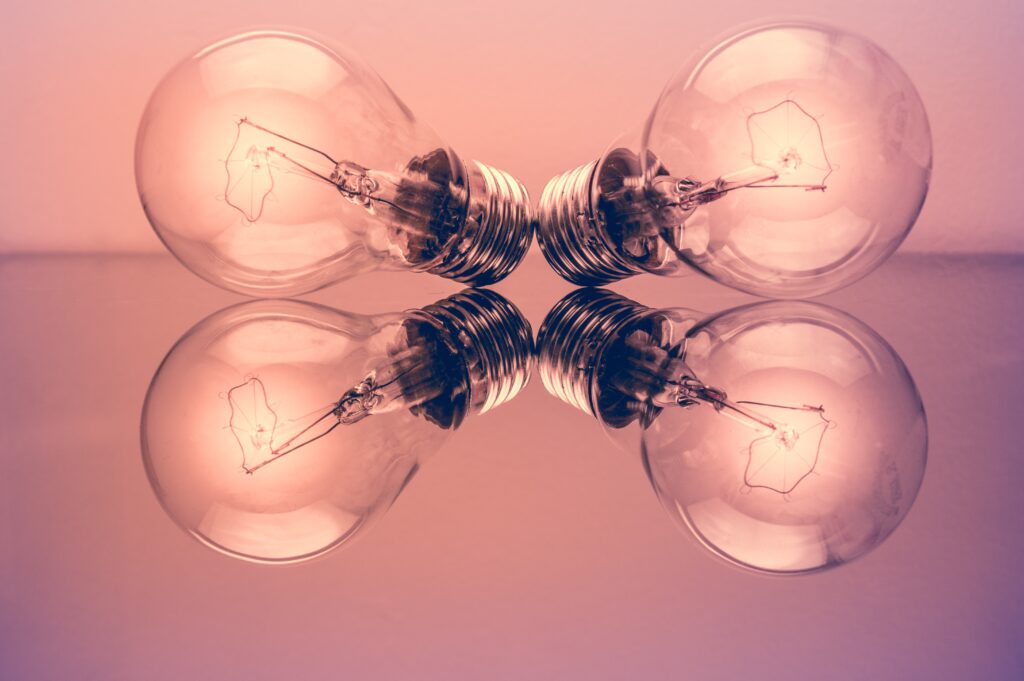
Advantages of Halogen Lighting
Halogen lighting provides several advantages over traditional incandescent lighting. One of the main benefits is its energy efficiency. Halogen bulbs use less energy to produce the same amount of light as incandescent bulbs, making them a more eco-friendly and cost-effective option. They can save you money on your electricity bills while providing bright and clear illumination.
Halogen bulbs also have a longer lifespan compared to incandescent bulbs, making them a durable lighting option. With proper usage and handling, halogen bulbs can last up to two or three times longer. This reduces the need for frequent replacements and minimizes waste.
Another advantage of halogen lighting is its versatility. Halogen bulbs are available in a wide range of shapes and sizes, making them suitable for various fixtures and applications. They also offer excellent color rendering, allowing for accurate and vibrant color representation in your home.
Types of Halogen Lighting
Halogen lighting comes in different types to accommodate different lighting needs. The most common type is the halogen bulb, which is often used in residential settings. Halogen bulbs come in various shapes, such as A-shape (standard bulb shape), PAR (parabolic aluminized reflector), and MR (multifaceted reflector), for different applications.
Another type of halogen lighting is the halogen tube, primarily used in commercial and industrial settings. These linear halogen bulbs are suitable for fixtures that require a linear shape, such as strip lights or automotive lighting.
Choosing Halogen Lighting
When choosing halogen lighting, it’s important to consider the specific requirements of your lighting needs. Pay attention to the wattage equivalence of halogen bulbs to traditional incandescent bulbs to understand the level of brightness you’ll achieve with each bulb. Additionally, check the color temperature options available to select the desired warmth or coolness of the light.
Consider the size and shape of the halogen bulbs to ensure compatibility with your fixtures. Pay attention to the base type, such as screw-in or pin-based, to ensure proper fitting. Lastly, consider the brand reputation and quality of the halogen bulbs. Opt for reputable brands that offer reliable warranties and quality assurance to ensure long-lasting and efficient lighting solutions.
Incandescent Lighting
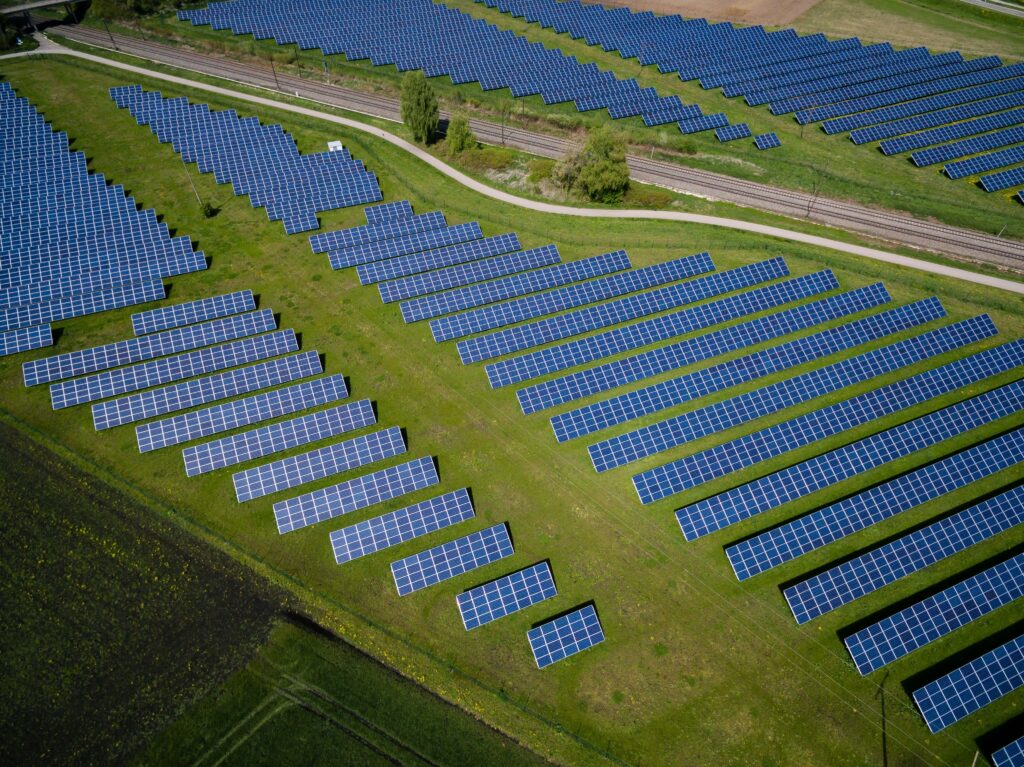
Disadvantages of Incandescent Lighting
While incandescent lighting has been the traditional lighting choice for many years, it has several notable disadvantages. One of the main drawbacks of incandescent bulbs is their low energy efficiency. Incandescent bulbs convert only a small fraction of the energy they consume into visible light, with the rest being wasted as heat. This inefficiency leads to increased energy consumption and higher electricity bills.
Another disadvantage of incandescent lighting is its short lifespan. Incandescent bulbs have a significantly shorter lifespan compared to energy-efficient alternatives like LED, CFL, or halogen bulbs. This means you’ll have to replace incandescent bulbs more frequently, resulting in increased maintenance and replacement costs.
Furthermore, incandescent bulbs emit a warm tone of light, which may not be suitable for every room or situation. The warm yellowish light can make colors appear less vibrant and affect the overall ambiance of the space. Incandescent lighting also emits more heat compared to energy-efficient alternatives, which can be a concern, especially in warmer climates or small spaces.
Alternatives to Incandescent Lighting
To overcome the drawbacks of incandescent lighting, there are several energy-efficient alternatives to consider. LED lighting, for example, offers excellent energy efficiency, long lifespan, and a variety of color options. CFL lighting provides similar benefits, with a wider range of shapes and sizes to choose from. Halogen lighting offers energy savings compared to incandescent bulbs while providing clearer and more vibrant illumination.
By switching to these energy-efficient alternatives, you can reduce your energy consumption, lower your electricity bills, and enjoy longer-lasting lighting solutions. Additionally, these alternatives offer more flexibility in terms of color temperature and brightness choices, allowing you to create the desired atmosphere in your home.
Smart Lighting
Advantages of Smart Lighting
Smart lighting systems have revolutionized the way we control and interact with our home lighting. One of the key advantages of smart lighting is its energy efficiency. Smart bulbs use LED technology, which is highly energy-efficient. Additionally, smart lighting systems allow for remote control and automation, ensuring that lights are only on when needed and can be adjusted for optimal energy savings.
Another advantage of smart lighting is the convenience and flexibility it offers. With smartphone apps or voice commands, you can control your lights from anywhere in your home or even when you’re away. Smart lighting also allows you to create customized schedules or routines, automatically adjusting the lighting levels throughout the day or when you’re on vacation, enhancing security and energy efficiency.
Smart lighting systems often come with additional features such as dimming capabilities and color-changing options. You can adjust the brightness and color temperature to match your mood or activity. Some smart bulbs even offer color-changing options, allowing you to create vibrant or soothing lighting effects.
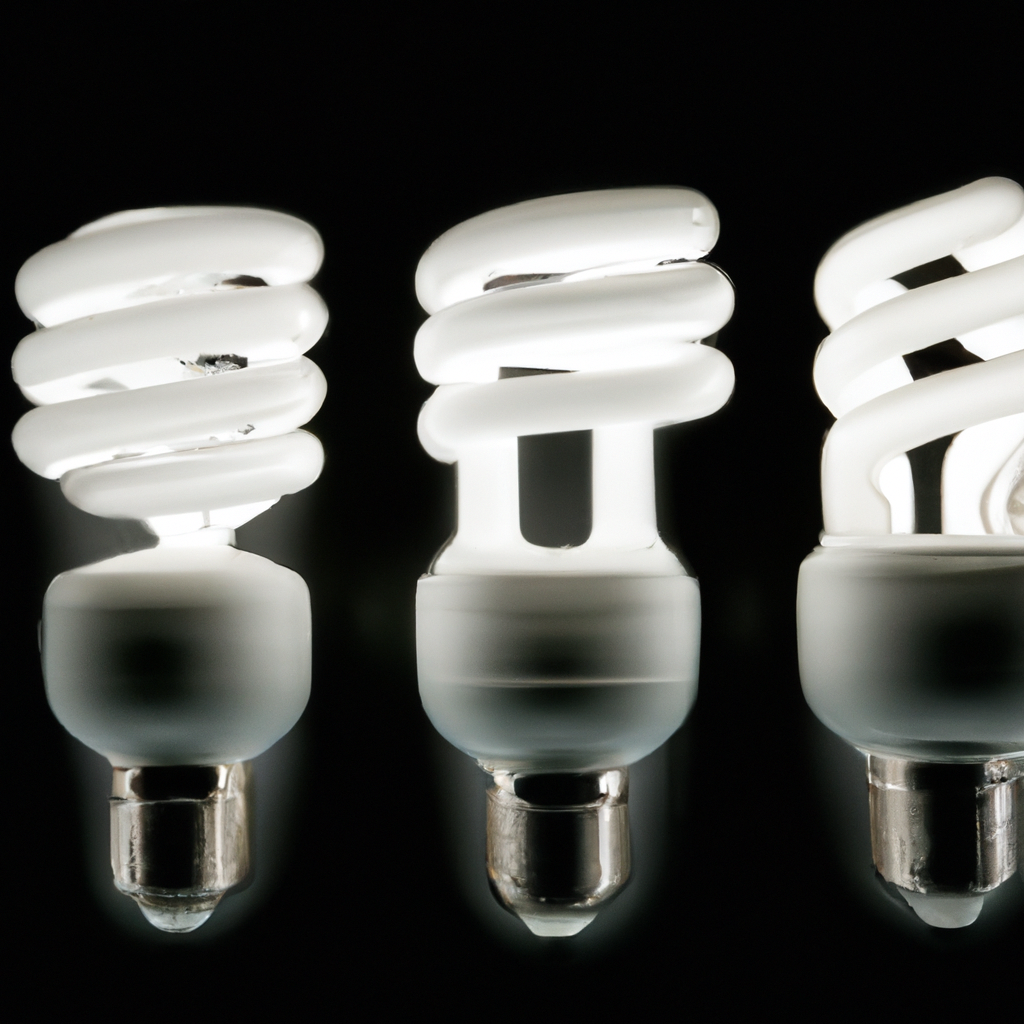
Smart Lighting Systems
Smart lighting systems consist of smart bulbs or fixtures, a central hub, and a control interface. The smart bulbs or fixtures are equipped with built-in wireless connectivity, usually using Wi-Fi or Bluetooth technology. These bulbs are controlled and managed through a central hub, which acts as a bridge between the bulbs and your control interface, such as a smartphone or voice-enabled device.
The central hub allows for seamless communication and control of multiple smart bulbs throughout your home. It also enables integration with other smart home devices, such as smart thermostats or security systems, for a comprehensive home automation experience.
The control interface can be a dedicated app on your smartphone or tablet, allowing you to control and customize your smart lighting settings. Many smart lighting systems also offer compatibility with popular voice assistants, such as Amazon Alexa or Google Assistant, providing hands-free control through voice commands.
Choosing Smart Lighting
When choosing smart lighting for your home, consider the compatibility with your existing smart home devices or ecosystem. Ensure that the smart lighting system you choose is compatible with your preferred control interface, whether it’s a smartphone app or voice-enabled device.
Additionally, consider the features and capabilities of the smart bulbs or fixtures. Look for options that offer energy-efficient LED lighting, brightness adjustment, dimming capabilities, and color temperature customization. If you desire colorful lighting effects, make sure to choose smart bulbs that offer a wide range of color options.
Pay attention to the ease of installation and setup. Some smart lighting systems require additional wiring or the use of a central hub, while others can be easily installed and operated directly through your existing Wi-Fi network. Choose a system that suits your technical skills and preferences.
Lastly, consider the brand reputation and customer support of the smart lighting system. Opt for established and reputable brands that offer reliable warranties and ongoing customer support to ensure a smooth and satisfactory user experience.
Solar Lighting
Advantages of Solar Lighting
Solar lighting is a sustainable and energy-efficient option that harnesses the power of the sun to illuminate your home. One of the key advantages of solar lighting is its environmental friendliness. Solar lights rely on solar panels to convert sunlight into electricity, reducing the reliance on fossil fuels and minimizing carbon emissions. By utilizing renewable energy, solar lighting helps mitigate climate change and reduce environmental impact.
Another advantage of solar lighting is its cost-effectiveness. Once the initial investment is made, solar lighting operates without recurring energy costs. Solar lights are powered by free and abundant sunlight, making them a cost-saving alternative in the long run. Additionally, solar lighting systems require minimal maintenance, further reducing costs and hassle.
Solar lighting also offers flexibility in terms of installation. Since solar lights operate independently from the electrical grid, they can be installed in remote locations without the need for extensive wiring or infrastructure. This makes solar lighting suitable for outdoor areas, such as gardens, pathways, or security lighting, where connecting to the electrical grid may be challenging or costly.

Types of Solar Lighting
Solar lighting is available in various types to cater to different lighting needs. The most common type is solar garden lights, which are designed for outdoor use. These lights are commonly used to illuminate walkways, gardens, or patios, enhancing the aesthetics and safety of outdoor spaces.
Solar floodlights are another type of solar lighting, typically used for security purposes or highlighting architectural features. These lights provide a bright and focused beam of light, ensuring optimal visibility in outdoor areas. Solar spotlights are similar to solar floodlights but are designed for highlighting specific objects or areas, such as trees or signage.
Solar string lights are popular for adding decorative lighting to outdoor spaces. These lights come in various shapes and colors, providing a festive ambiance for special occasions or everyday use. Solar-powered lanterns and path lights are also available, which can be used to create a charming and welcoming atmosphere in your outdoor areas.
Choosing Solar Lighting
When choosing solar lighting for your home, consider the location and available sunlight exposure. Solar panels require direct sunlight to charge efficiently, so ensure that the installation area receives an adequate amount of sunlight throughout the day. Assess any potential obstructions, such as trees or buildings, that may cast shadows and reduce the solar panel’s performance.
Pay attention to the battery capacity and lifespan of the solar lights. Opt for lights with longer battery life, ensuring that they can last through the night or during periods of low sunlight exposure. Consider the charging time required to fully recharge the batteries, as this can vary depending on the solar panel’s efficiency and the battery capacity.
Look for solar lights with adjustable settings or brightness levels to suit your lighting preferences. Some solar lights offer motion sensors or dusk-to-dawn sensors, which automatically turn on the lights when needed. Evaluate the durability and weather resistance of the solar lights, particularly if they will be exposed to harsh weather conditions.
Lastly, consider the design and style of the solar lights. Choose options that complement your outdoor aesthetics and match your desired ambiance. Solar lights come in various designs, finishes, and colors, allowing you to find the perfect option for your home.
Lighting Controls
Dimmer Switches
Dimmer switches provide the flexibility to adjust the brightness of your lighting according to your needs and preferences. They allow you to create various lighting moods, from soft and cozy to bright and vibrant. Dimming your lights not only enhances the ambiance but also saves energy by reducing the amount of electricity consumed.
When choosing dimmer switches, ensure compatibility with the type of lighting you have installed. Not all lights are dimmable, so check the packaging or specifications of your bulbs to determine if they are suitable for dimming. LED bulbs, in particular, may require specific dimmer switches to ensure compatibility and proper performance.
Installation of dimmer switches may require a licensed electrician, especially if you’re not familiar with electrical wiring. It is essential to follow safety guidelines and ensure the correct installation to prevent any electrical hazards. Consider the wattage and capacity of the dimmer switch to ensure it can handle the load of your lighting fixtures and bulbs.
Motion Sensors
Motion sensors provide an energy-efficient and convenient solution for lighting control. These sensors detect movement in a room or area and automatically turn on the lights. Motion sensors are commonly used in areas where motion is frequent but continuous lighting is unnecessary, such as hallways, closets, or bathrooms.
The sensitivity and range of motion sensors can be adjusted to suit different needs. Some sensors offer customizable settings, allowing you to control the time delay before the lights turn off after no motion is detected. This ensures that the lights are only on when needed, conserving energy and eliminating the need for manual switching.
Motion sensors can be installed as standalone devices or integrated into existing light fixtures. You can choose from various types, including ceiling-mounted sensors, wall-mounted sensors, or even outdoor motion sensors for security lighting. It is crucial to position the sensors strategically to ensure optimal detection without unnecessary triggering.
Timers and Occupancy Sensors
Timers and occupancy sensors offer additional options for automated lighting control. Timers allow you to schedule specific times for your lights to turn on or off, providing convenience and security when you’re away from home. They can be programmed to create the illusion of an occupied home and deter potential intruders.
Occupancy sensors are similar to motion sensors but are designed to detect the presence of a person rather than just movement. These sensors are commonly used in commercial settings for energy-saving purposes. Occupancy sensors automatically turn off the lights when a room or area is unoccupied, eliminating the need for manual control.
When choosing timers or occupancy sensors, consider the available programmable features and user interface. Choose options that are easy to program and customize to suit your specific preferences. Look for timers or sensors that integrate with your existing lighting system or smart home devices for seamless automation and control.
Natural Lighting
Maximizing Natural Light
Maximizing natural light in your home not only reduces the need for artificial lighting but also creates a bright and vibrant living environment. There are several strategies you can use to maximize natural light:
-
Keep windows unobstructed: Ensure that curtains, blinds, or furniture near windows do not block the natural light from entering. Use sheer curtains or light-colored window coverings that allow light to pass through while providing privacy.
-
Use reflective surfaces: Mirrors or glossy surfaces can reflect natural light and distribute it throughout the room. Place mirrors strategically opposite windows to bounce light around and create the illusion of a larger space.
-
Light-colored walls and ceilings: Paint your walls and ceilings in light colors to enhance the reflection of natural light. Light tones create a sense of openness and brightness, making the most of available daylight.
-
Prune outdoor vegetation: Trim trees, shrubs, or other outdoor vegetation near windows to allow more natural light into your home. Remove any obstructions that may block sunlight from entering the interior spaces.
-
Use light-transmitting materials: When selecting window treatments or furniture, opt for materials that allow light to pass through. Consider using glass or translucent materials for partitions or doors to maintain light permeability.
Using Skylights and Sun Tubes
Skylights and sun tubes are effective ways to bring natural light into areas that do not have direct access to windows or lack adequate daylight. They provide an excellent solution for dark hallways, bathrooms, or closets. Skylights are windows installed in the roof, while sun tubes are reflective tubes that channel sunlight from the roof to the interior space.
Skylights come in various designs, such as fixed skylights, vented skylights, or tubular skylights, offering different functionalities and installation options. Fixed skylights provide a permanent source of natural light and can be installed in various locations, depending on your needs. Vented skylights offer additional ventilation by allowing fresh air to enter when opened.
Sun tubes, also known as solar tubes or light pipes, consist of a dome on the roof that captures sunlight and a reflective tube that directs the sunlight to a diffuser in the interior space. Sun tubes are particularly useful in areas where skylights may not be feasible due to structural limitations or where natural light is needed through multiple levels of a building.
When considering skylights or sun tubes, take into account the orientation and slope of your roof to maximize the amount of sunlight captured. Additionally, consider the size and placement of the skylights or sun tubes to ensure proper lighting distribution and minimize potential glare or overheating in the interior space.
Task Lighting
Benefits of Task Lighting
Task lighting is a focused and localized lighting solution that provides illumination for specific activities or tasks. It offers several benefits in terms of functionality, comfort, and energy efficiency.
One of the key advantages of task lighting is its ability to enhance visibility and productivity. By directing light to specific areas where tasks are performed, task lighting reduces eye strain and improves concentration. It allows you to see details more clearly, whether you’re reading, cooking, or working on crafts or hobbies.
Task lighting also promotes energy efficiency by providing the right amount of light only where it’s needed. Instead of relying on general overhead lighting for every task, task-specific lighting allows you to use lower wattage bulbs or more energy-efficient lighting options. This can reduce your overall energy consumption and lower your energy bills.
Additionally, task lighting allows for flexibility and customization. You can choose the type, intensity, and direction of lighting that best suits your specific needs. Task lighting fixtures come in various designs and styles, enabling you to incorporate them seamlessly into your existing decor.
Types of Task Lighting
Task lighting can be achieved through various types of fixtures and lamps, depending on the specific task and area of focus. Some common types of task lighting include:
-
Desk lamps: Desk lamps are essential for providing focused lighting in workspaces or study areas. They come in various designs, such as adjustable arm lamps or task lamps with built-in LED panels, allowing you to direct light precisely where it’s needed.
-
Under-cabinet lights: Under-cabinet lighting is particularly useful in kitchens or workspaces where additional illumination is needed on countertops or work surfaces. LED strip lights or puck lights can be installed underneath cabinets to provide focused and glare-free task lighting.
-
Reading lamps: Reading lamps are designed specifically for reading or other close-range activities. They often have an adjustable gooseneck or an articulating arm, allowing you to position the light at the desired angle. Floor lamps or bedside lamps with reading lights are popular options.
-
Pendant lights: Pendant lights with adjustable height or directional lighting are ideal for task lighting in dining areas or over kitchen islands. They provide both ambient and focused lighting, creating a visually appealing and functional lighting solution.
-
Picture lights: Picture lights are designed to highlight artwork or wall hangings. These wall-mounted or ceiling-mounted fixtures offer focused lighting that brings attention to the details of the displayed items.
Placement of Task Lighting
Proper placement of task lighting is crucial to ensure optimal illumination and functionality. Consider these tips when placing task lighting in your home:
-
Position the light source to minimize shadows and glare. For desk or table lamps, the light should be directed towards the task area without causing direct glare on the eyes. Adjustable lamps or fixtures with diffusers can help achieve the desired lighting quality.
-
For under-cabinet lighting, ensure even and uniform distribution of light across the work surface. Install the lights close to the front edge of the cabinet to minimize shadows and provide adequate illumination.
-
Place reading lamps at a comfortable height and angle. The light source should be positioned slightly above eye level and directed towards the reading material to reduce eye strain.
-
When using pendant lights for task lighting, consider the size and layout of the area. Adjust the height and position of the pendant lights to ensure that they effectively illuminate the task area without obstructing the line of sight or being too bright.
-
For picture lights, position the fixtures to highlight the artwork or wall hangings while minimizing glare or shadows. The light source should be angled to illuminate the artwork evenly and enhance its visual impact.
Lighting Fixtures
Energy-efficient Fixture Designs
Energy-efficient lighting fixtures are designed with a focus on optimizing light output while minimizing energy consumption. These fixtures often incorporate advanced technologies and innovative design features to provide efficient and sustainable lighting solutions.
One common energy-efficient fixture design is the use of LED technology. LED fixtures offer excellent energy efficiency, long lifespan, and a variety of lighting options. LED panels, for example, provide uniform and glare-free lighting, making them suitable for offices or large indoor spaces. LED downlights offer focused and efficient lighting for various residential and commercial applications.
Another design feature of energy-efficient fixtures is the use of reflectors or diffusers to maximize light distribution. Reflectors help direct and redirect light, ensuring that the light emitted by the fixture is evenly distributed without wasteful spillage. Diffusers, on the other hand, soften and scatter the light, reducing glare and creating a more comfortable and uniform lighting experience.
Some energy-efficient fixtures also incorporate smart lighting control features. These fixtures can be connected to a smart lighting system, allowing for remote control, dimming capabilities, or integration with other smart home devices. Such control features enhance energy efficiency by providing tailored lighting levels and schedules based on user preferences and occupancy.
Choosing Energy-efficient Lighting Fixtures
When choosing energy-efficient lighting fixtures, consider the specific lighting requirements and the intended use of the space. Assess the size, layout, and purpose of the room to determine the appropriate lighting fixtures and types. Here are some factors to consider:
-
Energy efficiency: Look for fixtures labeled with ENERGY STAR certification or similar energy efficiency ratings. These labels indicate that the fixtures have met specific energy-saving criteria and can help you identify the most efficient options.
-
Light output and distribution: Evaluate the lumen output and beam angle of the fixtures to ensure that they provide adequate light coverage for the intended space. Consider the desired lighting effect, such as ambient, accent, or task lighting, and choose fixtures accordingly.
-
Color temperature and color rendering: Pay attention to the color temperature and color rendering index (CRI) of the fixtures. Color temperature determines the warmth or coolness of the light, while CRI measures how accurately the light reveals the true colors of objects. Choose fixtures that offer the desired color temperature and a high CRI for optimal lighting quality.
-
Dimming capabilities: If you prefer adjustable lighting levels, look for fixtures that are compatible with dimmer switches or offer built-in dimming capabilities. Dimmable fixtures provide flexibility and allow you to customize the lighting ambiance according to your needs.
-
Design and aesthetics: Consider the overall design and aesthetics of the fixtures to ensure they complement the style and decor of your space. There are various styles, finishes, and sizes available to match different interior designs and personal preferences.
-
Brand reputation and warranty: Choose fixtures from reputable brands that offer reliable warranties and customer support. Consider the durability, quality, and long-term performance of the fixtures to ensure a satisfactory and long-lasting lighting solution.
By selecting energy-efficient lighting fixtures, you can reduce your environmental impact, save on energy costs, and enjoy comfortable and sustainable lighting in your home.
